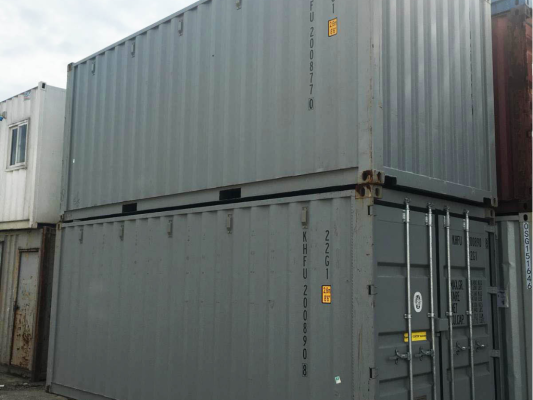Exploring Shipping Container Communities: Building a New Kind of Neighborhood

As urban populations grow and housing prices soar, innovative solutions to home construction are becoming more critical than ever. One such solution that has garnered increasing attention is shipping container communities. These unique, modular homes offer a creative and sustainable alternative to traditional housing, with neighborhoods sprouting up around the globe. In this article, we’ll explore what shipping container communities are, the benefits they offer, and how they are redefining the concept of neighborhood living.
What Are Shipping Container Communities?
Shipping container communities are residential neighborhoods constructed from repurposed shipping containers. These large steel containers, typically used for transporting goods across the globe, are transformed into modern, functional living spaces. Stacked, connected, and customized, they can serve as anything from single-family homes to entire apartment complexes. These communities are designed with the same amenities as traditional neighborhoods, including green spaces, communal areas, and even commercial spaces, providing residents with a sense of community while promoting sustainable living.
Why Choose Shipping Container Communities?
1. Sustainability
At the forefront of shipping container living is sustainability. By repurposing used containers, these communities reduce the demand for new building materials and minimize waste. Shipping containers are built to last, resistant to weather and wear, making them an eco-friendly option for constructing homes that are both durable and energy-efficient. Many communities also incorporate solar panels, rainwater harvesting systems, and other green technologies to further reduce their environmental impact.
2. Affordability
One of the primary reasons people are drawn to shipping container homes is the affordability factor. Traditional home construction can be expensive, especially in urban areas where real estate prices are high. Shipping container homes, on the other hand, can be built at a fraction of the cost. With fewer materials required and shorter construction times, developers can offer affordable housing options for first-time buyers, renters, and those looking to downsize. This makes these communities particularly appealing to millennials, retirees, and anyone seeking a more cost-effective way of living.
3. Flexibility and Customization
Another advantage of shipping container communities is the flexibility they offer. Containers can be easily modified and customized to suit individual preferences, whether for a single home or an entire neighborhood. Containers can be stacked, joined together, or used in various configurations to create unique designs. This modular approach allows developers to create diverse layouts that can cater to different needs, such as co-living spaces, individual homes, or even mixed-use buildings with retail or office spaces on the lower levels.
A New Kind of Neighborhood
Shipping container communities are changing the way we think about neighborhoods. These developments are not just about housing but about fostering a sense of belonging and community. Many container communities are designed with shared spaces such as gardens, rooftop terraces, and community centers that encourage interaction and collaboration among residents.
1. A Sense of Community
In contrast to traditional neighborhoods, where people often live in isolation, shipping container communities are designed to promote social engagement. Whether it’s shared green spaces, communal dining areas, or co-working spaces, these communities provide ample opportunities for residents to connect with one another. This sense of community is particularly valuable in today’s world, where urban living can sometimes feel impersonal and disconnected.
2. Fostering Creativity
The design flexibility of shipping container homes also fosters creativity within the community. Architects and residents alike have the freedom to think outside the box (literally) and create visually stunning and functional spaces. This creativity extends beyond individual homes to the entire layout of the community, with shared spaces, public art installations, and innovative landscaping helping to define the character of each neighborhood.
3. Resilience and Adaptability
Shipping container communities are also highly adaptable to different environments and situations. In areas prone to natural disasters, such as hurricanes or earthquakes, containers’ sturdy, weather-resistant design makes them a safe and resilient housing option. Additionally, because they can be built quickly and affordably, shipping container communities are an ideal solution for temporary housing needs, such as for disaster relief efforts or housing for displaced populations.
Real-Life Examples of Shipping Container Communities
Across the world, several shipping container communities are already thriving:
- Container Park in Las Vegas, Nevada: This mixed-use development features retail shops, restaurants, and a park, all housed within repurposed shipping containers.
- Keetwonen in Amsterdam, Netherlands: One of the largest container communities in the world, Keetwonen is home to over 1,000 students, offering affordable housing in the heart of the city.
- Freitag Tower in Zurich, Switzerland: A striking example of how shipping containers can be used in creative ways, this tower is made entirely from containers and houses a store as well as a rooftop terrace.
Conclusion: A Glimpse into the Future of Housing
Shipping container communities represent a forward-thinking solution to many of the challenges we face in urban development today. They offer sustainable, affordable, and creative housing options while fostering a sense of community and resilience. As more people recognize the benefits of living in these unique neighborhoods, we can expect to see an increase in shipping container communities around the world, building a new kind of neighborhood for the future.
By transforming something as simple as a shipping container into a home, these communities are proving that innovative solutions can not only solve housing crises but also create vibrant, livable spaces.

